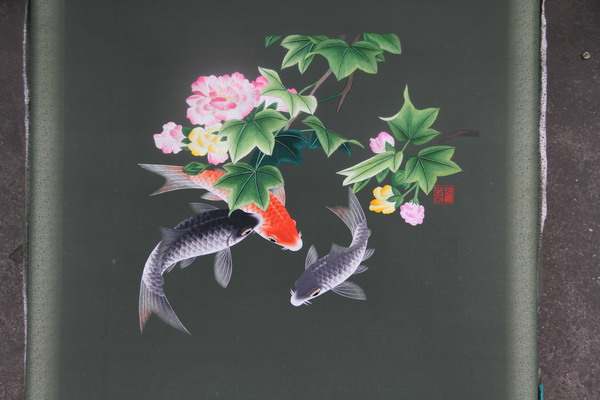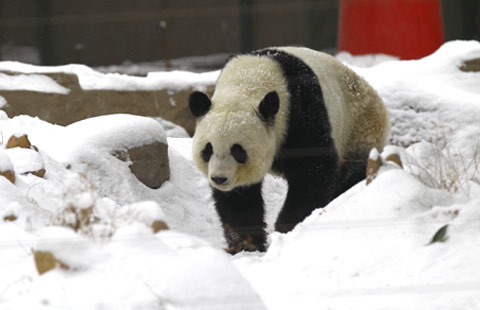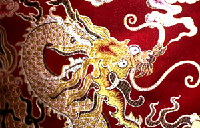Sichuan in stitches
Updated: 2014-03-07 11:05
By Huang Zhiling (China Daily)
|
||||||||
|
 |
|
Flowers and Fish, Shu embroidery by Peng Shiping. Provided to China Daily |
Shu embroidery, one of four regional schools of ancient needlework in China, captures images that are timeless. But the craft may be a dying art form, Huang Zhiling reports in Chengdu.
Monkeys frolic on trees. Tigers stroll in the mountains. Carp swim in water. Giant pandas and red pandas rest beside transparent lakes. These intricate figures-as well as people in traditional Chinese attire-come to life on the satin and colorful threads of Shu embroidery.
Stepping into Peng Shiping's home on the sixth floor of an old residential quarter in downtown Chengdu, Sichuan province, visitors feel like they are in a museum of this fine craft.
One of the needleworks depicts Sima Xiangru and Zhuo Wenjun on one side and two pandas on the other.
Sima and his wife Zhuo, who are household names in Chinese literature, lived in the Western Han Dynasty (206 BC-AD 24). They are famous for their romance in feudal China, when men and women had no freedom to choose their spouses, and men met their wives for the first time at their wedding.
When Sima was invited to dinner in Zhuo's home by her father, a rich merchant in Qionglai, Sichuan, he played music on a seven-stringed plucked instrument. The melody touched the young widow's heart as she listened to the music while hiding behind a screen.
Together with Suzhou embroidery in Jiangsu province, Xiang embroidery in Hunan province and Yue embroidery in Guangdong province, Shu embroidery is one of the four schools of embroidery in China. "Shu" is the ancient name for Sichuan.

 Gorgeous Liu Tao poses for COSMO magazine
Gorgeous Liu Tao poses for COSMO magazine
 Post-baby Duchess
Post-baby Duchess
 Victoria Beckham S/S 2014 presented during NYFW
Victoria Beckham S/S 2014 presented during NYFW
 'Despicable' minions upset Depp's 'Lone Ranger' at box office
'Despicable' minions upset Depp's 'Lone Ranger' at box office
 'Taken 2' grabs movie box office crown
'Taken 2' grabs movie box office crown
 Rihanna's 'Diamonds' tops UK pop chart
Rihanna's 'Diamonds' tops UK pop chart
 Fans get look at vintage Rolling Stones
Fans get look at vintage Rolling Stones
 Celebrities attend Power of Women event
Celebrities attend Power of Women event
Most Viewed
Editor's Picks

|

|

|

|

|

|
Today's Top News
Crimea referendum would violate law: Obama
US House passes Ukraine aid bill
Premier Li puts accent on reform
US motor-maker revs up in China
China declares 'war' on pollution
China-US relations as revealed in stamps
E-passport available in NY
Chinese firm acquires Texas oil, gas company
US Weekly

|

|









